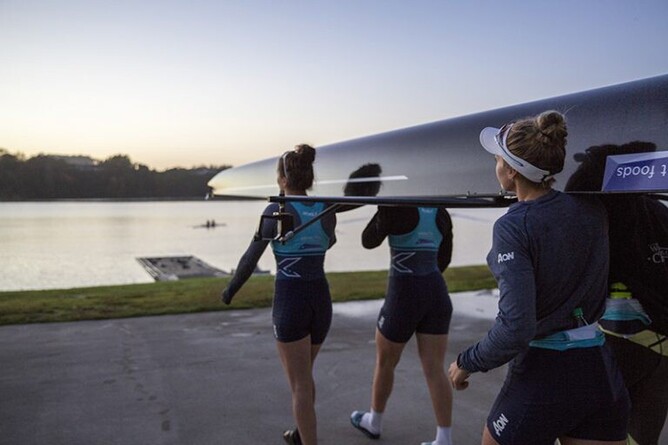Rowing NZ is the national sports organisation for all rowing in New Zealand, representing the interests of school, university, club, masters, para and indoor rowing around the country.
The primary objective of Rowing NZ is to foster and promote the sport of rowing in New Zealand in all its forms and classifications. They have 26 employees and look after 56 professional athletes, with their head office located at Lake Karapiro.
The Challenges
Before Gail Nell, Rowing NZ’s General Manager – Finance, started with the organisation in 2017, the business had already identified that there were limitations with their current accounting system, a desktop-based entry-level MYOB system combined with Microsoft Excel spreadsheets for reporting.
“Over time we have had a lot of changes to our reporting requirements and how we provide information to our key stakeholders including the Board and government organisations, and so the MYOB system was only just coping with our current needs,” explains Nell.
“One change we wanted to implement was being able to report on our carbon footprint in an efficient way, which the existing package wasn’t able to do.
“Reporting on this aligns with Rowing NZ’s goals to be as sustainable as possible and care for the environment, given rowing as a sport is integrally linked to our waterways. Our regular overseas travel (pre-Covid) for competitions meant that we had a substantial carbon footprint to be measured and reported on.”
Like many organisations, Rowing NZ was also working with a completely paper-based system that meant the finance team and other staff were expending considerable time on approvals and log sheets.
“Our invoice authorisation system was a piece of paper going to multiple people to be signed off, which isn’t very practicable even before the challenges of the pandemic hit.
“We also often have coaches overseas with company credit cards, who were having to carry around hundreds of receipts to be logged once they returned to New Zealand, often three to four months later.”
Then, when MYOB stopped offering support for their existing system, this was the final push for Rowing NZ to begin the research phase for a new system that could meet their evolving needs.
The Solution
As part of their discovery phase, Rowing NZ looked at what solutions were on offer from entry-level to full Enterprise Resource Planning (ERP) systems, before going to market, setting up demonstrations and reviewing quotes.
The team’s extensive review looked at 10 initial solutions reviewed at a high level, then after a more in-depth review of four they narrowed it down to two solutions, MYOB EXO and Sage.
Finding that the solutions were similar in functionality, it was the BES team who swung their decision, impressing during the demonstration with their wide knowledge, their ability to demonstrate the product specifically to address organisational needs, and the positive recommendations Rowing NZ received about BES during the review stage.
“At the demonstration, BES ran through a variety of different scenarios, and did a great job of identifying our needs and showing how the Sage 300 system could deal with our requirements.
“In the end, our decision to go with Sage was as much about the supportive team as the software itself. We needed to know we could rely on the people implementing it,” says Nell.
The chosen system, Sage 300, is a mid-range ERP with a very good reputation. It offered:
Strong functionality for multi-currency, inventory, web and smartphone invoice approval, and automated supplier invoice data capture
Fully paperless
Multiple deployment options – able to run on-premises or in the cloud
Excellent integration with Microsoft Excel and good reporting options
Good workflow management to cope with Rowing NZ’s complex requirements around delegated authority and their approval hierarchy
Multi-year budgets
Great asset management solution
Good reporting functionality, including the ability to report on carbon footprint
The Implementation and Benefits
The Sage system was implemented between March and April 2020, working around the limitations of the level four lockdown in response to the Covid-19 pandemic.
“We were lucky to have a few face-to-face training sessions before we went into level four, so we had some basic run-throughs with Andrea and Brendon before moving online.
“They were great with offering online training one-on-one, and the system in general was easy to pick up.”
Nell says that from a finance perspective they’ve found the Sage system to be quick, reliable and handles Rowing NZ’s volumes easily. The time saved across the organisation has also been much appreciated.
“Several months later I still hear comments about how easy it is, especially around managing credit cards. One manager, who often has 50-100 receipts per month, loves scanning them into the app as they go, saving them hours of time previously taken to record them all.
“Our team also welcomed the automation with invoice approvals, with invoices signed off at the click of a button, reducing approval timeframes in a secure, non-paper based system.
“We really implemented it just at the right time; our previous paper-based system wouldn’t have worked while our employees were working from home until New Zealand returned to level one in June 2020.”
The last actions remaining as part of their implementation is to complete the reporting set up, which the Rowing NZ team will look to do as soon as they get some clear space.
“With our extensive range of stakeholders, we’re excited to be able to report at varying levels at the click of a button, with little to no manual effort required.”
Once their reporting is up and running, they will also look to set up dashboards in the system for enhanced tracking and reporting.

